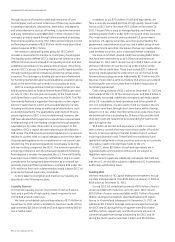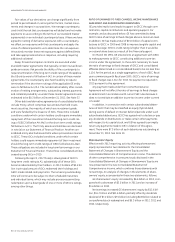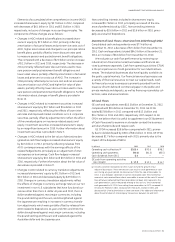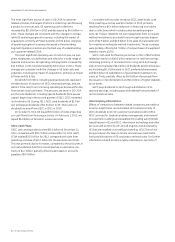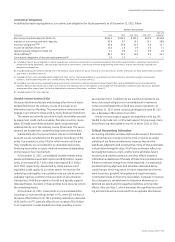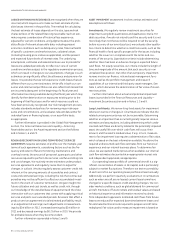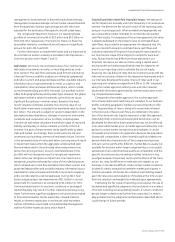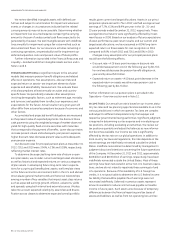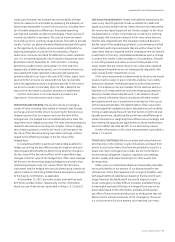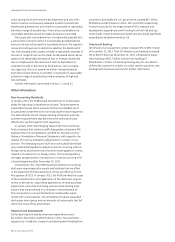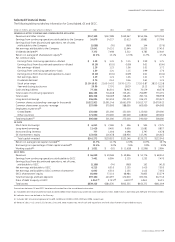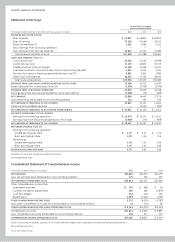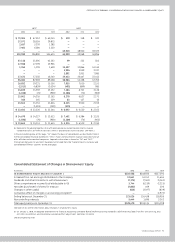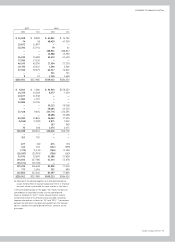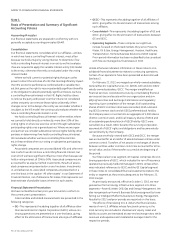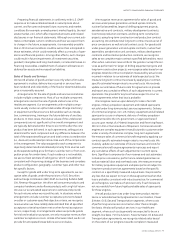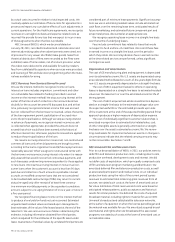GE 2012 Annual Report Download - page 70
Download and view the complete annual report
Please find page 70 of the 2012 GE annual report below. You can navigate through the pages in the report by either clicking on the pages listed below, or by using the keyword search tool below to find specific information within the annual report.management’s discussion and analsis
68 GE 2012 ANNUAL REPORT
years, during which time relevant developments and new infor-
mation must be continuously evaluated to determine both the
likelihood of potential loss and whether it is possible to reasonably
estimate a range of possible loss. When a loss is probable but a
reasonable estimate cannot be made, disclosure is provided.
Disclosure also is provided when it is reasonably possible that
a loss will be incurred or when it is reasonably possible that the
amount of a loss will exceed the recorded provision. We regularly
review all contingencies to determine whether the likelihood of
loss has changed and to assess whether a reasonable estimate of
the loss or range of loss can be made. As discussed above, devel-
opment of a meaningful estimate of loss or a range of potential
loss is complex when the outcome is directly dependent on
negotiations with or decisions by third parties, such as regula-
tory agencies, the court system and other interested parties.
Such factors bear directly on whether it is possible to reasonably
estimate a range of potential loss and boundaries of high and
low estimates.
Further information is provided in Notes 2, 13 and 25.
Other Information
New Accounting Standards
In January 2013, the FASB issued amendments to existing stan-
dards for reporting comprehensive income. The amendments
expand disclosures about amounts that are reclassified out of
accumulated comprehensive income during the reporting period.
The amendments do not change existing recognition and mea-
surement requirements that determine net earnings and are
effective for our first quarter 2013 reporting.
In January 2013, the Emerging Issues Task Force reached a
final consensus that resolves conflicting guidance between ASC
Subtopics 810-10, Consolidation, and 830-30, Foreign Currency
Matters—Translation of Financial Statements, with regard to the
release of currency translation adjustments in certain circum-
stances. The Emerging Issues Task Force concluded that release
upon substantial liquidation applies to events occurring within a
foreign entity and that the loss of control model applies to events
related to investments in a foreign entity. The revised guidance
will apply prospectively to transactions or events occurring in fis-
cal years beginning after December 15, 2013.
In December 2011, the FASB issued amendments to existing
disclosure requirements for assets and liabilities that are offset
in the statement of financial position, which are effective for the
first quarter of 2013. In January 2013, the FASB clarified the scope
of the amendments to limit application of the disclosure require-
ments to derivatives, repurchase agreements, reverse purchase
agreements, securities borrowing and securities lending trans-
actions that are presented on a net basis in the statement of
financial position or are permitted to be netted under agree-
ments with counterparties. The amendments require expanded
disclosures about gross and net amounts of instruments that fall
within the scope of the amendment.
Research and Development
GE-funded research and development expenditures were
$4.5 billion, $4.6 billion and $3.9 billion in 2012, 2011 and 2010,
respectively. In addition, research and development funding from
customers, principally the U.S. government, totaled $0.7 billion,
$0.8 billion and $1.0 billion in 2012, 2011 and 2010, respectively.
Aviation accounts for the largest share of GE’s research and
development expenditures with funding from both GE and cus-
tomer funds. Power & Water and Healthcare also made significant
expenditures funded primarily by GE.
Orders and Backlog
GE infrastructure equipment orders increased 3% to $96.7 billion
at December 31, 2012. Total GE infrastructure backlog increased
4% to $209.5 billion at December 31, 2012, composed of equip-
ment backlog of $52.7 billion and services backlog of
$156.8 billion. Orders constituting backlog may be cancelled or
deferred by customers, subject in certain cases to penalties. See
the Segment Operations section for further information.


